Winters in the Himalayas is a world of its own. With the intensely cold weather and the seemingly endless range of mountains being engulfed by sheets of snow, this frozen world is a go to destination for all adventure loving souls! To add to the glory, an amalgamation of Himalayas & wildlife expedition is a lifetime experience.
It’s a privilege to have been to several prominent wildlife parks in the country! While the big cats are an absolute delight to spot and photograph, I have always wanted to get other wildlife species that are equally engrossing. Among the most challenging animals to track and spot is a leopard. The major reasons being its nature of elusive and shy. Furthermore, the leopards are masters of disguise because their skin pattern perfectly blends with their habitat. This is, especially, true for its Himalayan counterpart. Typically, these are solitary creatures. Seldom, can they be spotted together. Above all these parameters, they are crepuscular. Typically, they are active during dusk and dawn. However, in the case of Himalayan regions, which have a sparse human population, they may become active during the day. Welcome to another riveting tale where I narrate my experiences of Snow Leopard Expedition – My tenth visit to the Mighty Himalayas.
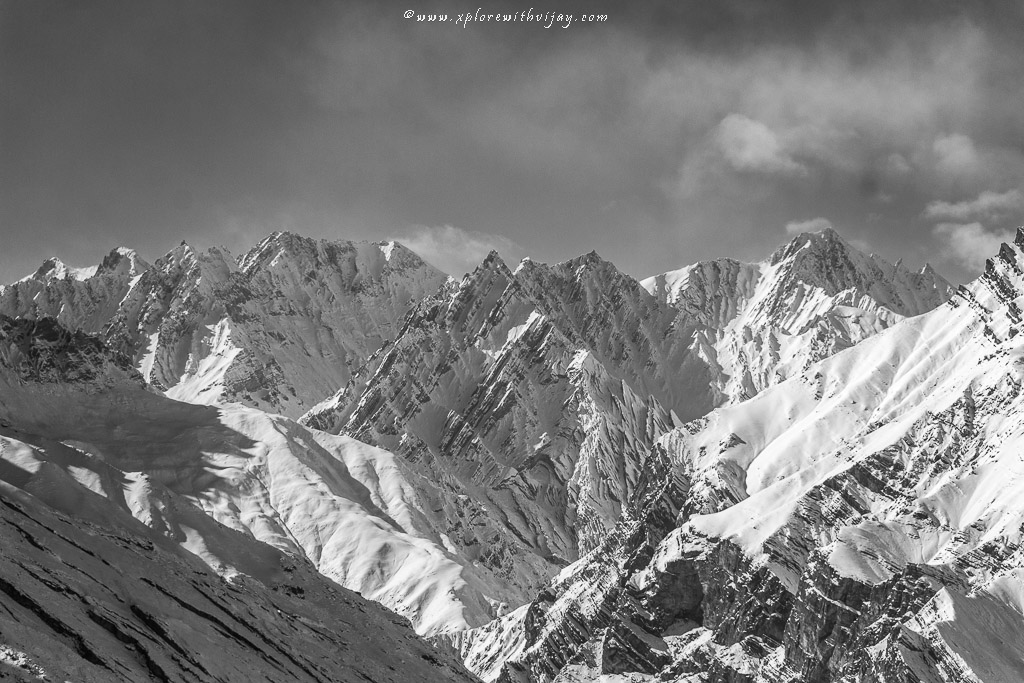
Planning:
This is a narration of my journey, taking a step back in time to January 2022, when travel was considered non-essential. For more than two years in a row, the entire planet was under the grip of deadly pandemic COVID-19. With restricted mobility, any type of Travel was deemed complicated. However, towards the end of 2021, travel norms were beginning to ease. My friend and I used this window of opportunity to make travel plans for the upcoming holiday season. Just when everyone thought that the second wave of COVID-19 pandemic was fading away, a new variant popped out of nowhere and the world was abuzz whether this new variant will cause any harm and/or bring in fresh travel restrictions. With all our travel arrangements in place, we were caught in a conundrum of repetitive thoughts for several weeks.
Pre-Departure Challenges:
Frankly, we were least bothered about the new COVID-19 variant, Omicron. Rather we were apprehensive about the policy makers re-introducing any new travel restrictions. With airlines across the country mandating newer regulations wherein a passenger must be in possession of COVID-19 vaccine certificates, relevant health documents, interstate travel restrictions and a possibility of nationwide lockdown, there prevailed an undesirably restrictive atmosphere. At one point in time, we decided to defer our travel plans. But deep down there was an intense desire and enthusiasm to break these barriers and go with the original itinerary. And, gladly though, we arrived at the diligent decision to pursue our journey, come what may.
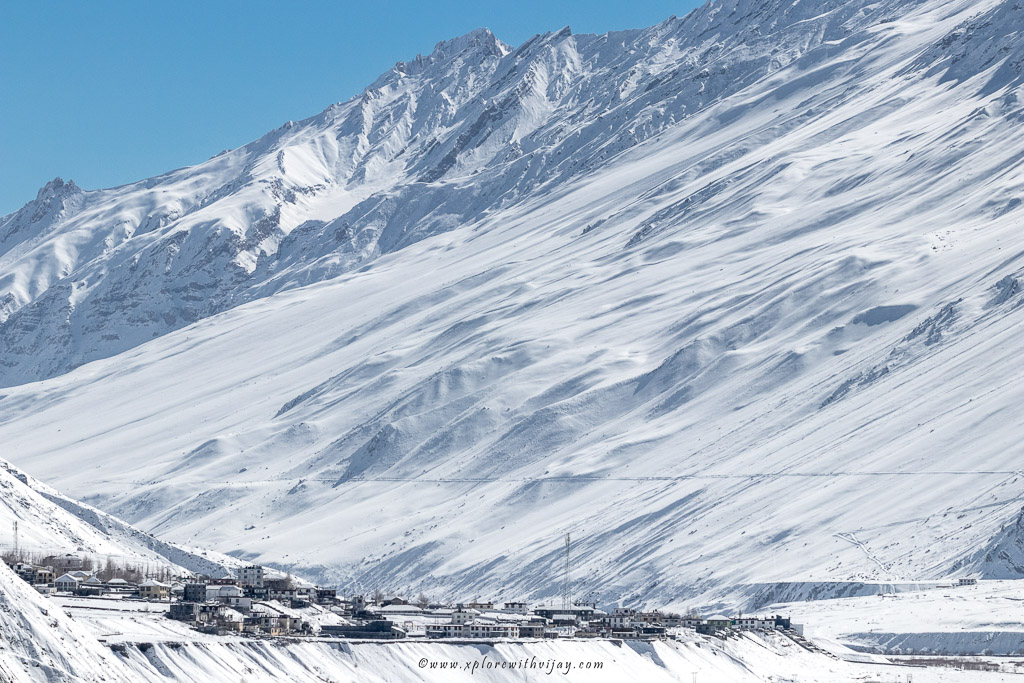
Day 1 – The Inception:
After a month-long deliberation, the D-Day arrived. For the first time, since the inception of my travelling days, there was nervousness. Nervous, due to all that was unfolding around me and for undertaking journey after a long while. Waking up half past 2 in the morning, even before my alarm could buzz, and getting dressed up for the early morning departure was something I will relish for a long time. A little past 4 in the morning, my friend and I arrived at the Chennai Domestic Airport. Watching the near-desolated check-in counters and catching-up a friendly chat with CRPF (Central Reserve Police Force) official made a fantastic start to the day. Seeing the large array of camera equipment, the official was eager to know where I was heading to. I replied: “We are on a wildlife expedition and it’s going to be a lifetime experience for both of us exploring the cold arid deserts of Spiti Valley in the peak of winters where the temperatures go down to as low as minus 40 degrees Celcius”. The security personnel was so engrossed that he shared his love for Photography.
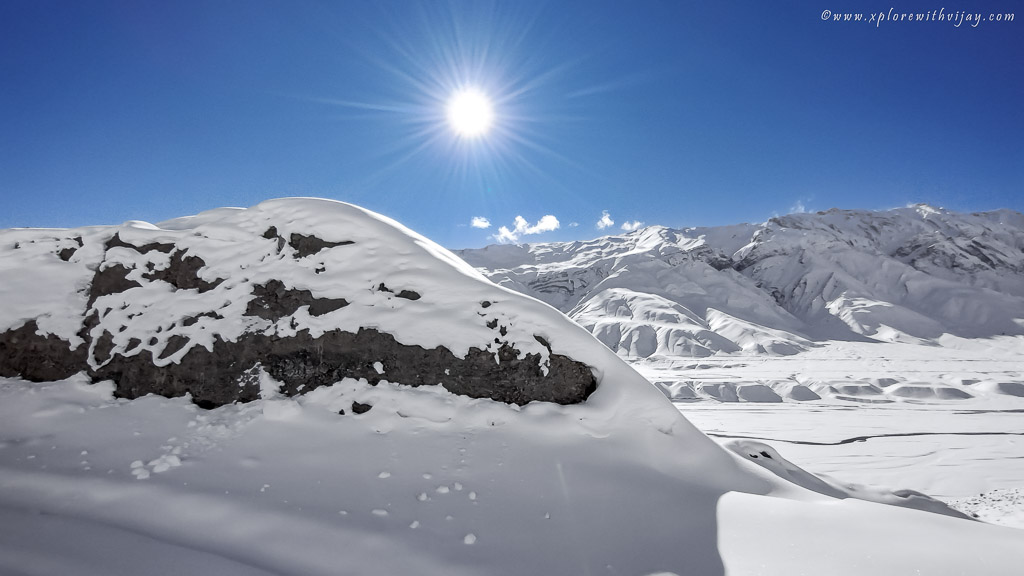
Having cleared the security check and sipping a hot cup of coffee, we just realized that we were the last set of passengers to fly the Air India plane. This, probably, was the last instance of the aircraft managed by the Govt of India. The Tata Group had just acquired the ownership of the beloved Air India fleet. Relishing the in-flight meals and witnessing a beautiful sunrise onboard the aircraft was a delightful experience. After a little over 3 hours, New Delhi welcomed us with biting cold temperatures and the capital city was engulfed in a thick fog. Upon arrival, we made the best utilization of available transit time at the sprawling Indira Gandhi International Airport’s Lounge. Later, a one-hour journey landed us at the Union Territory of Chandigarh. Thereafter, we settled down in our hotel room.
Day 2- Euphoric & Ecstatic:
The next morning, we set forth on a long multi-day road journey to our destination. The first day of our 565 km long-journey was a remarkable drive, zipping past the picturesque queen of Hills – Shimla. And, just as we managed to make our way out of the crowded Shimla and into Kufri, we had our first moment of joy. The weather had drastically changed and we witnessed season’s first snowfall. The fresh snowfall turned the entire valley into a vibrant white wonderland. The snowfall brought in several challenges for us. The wet roads meant that we need to be under a regulated safe speed limit. After an 8-hour drive navigating via Shimla, Kufri, Theog, & Narkanda, we arrived at our first overnight stay of this journey. We were, currently, at an altitude of about 9000 feet and the temperatures dropped to as low as 4 degrees Celsius.
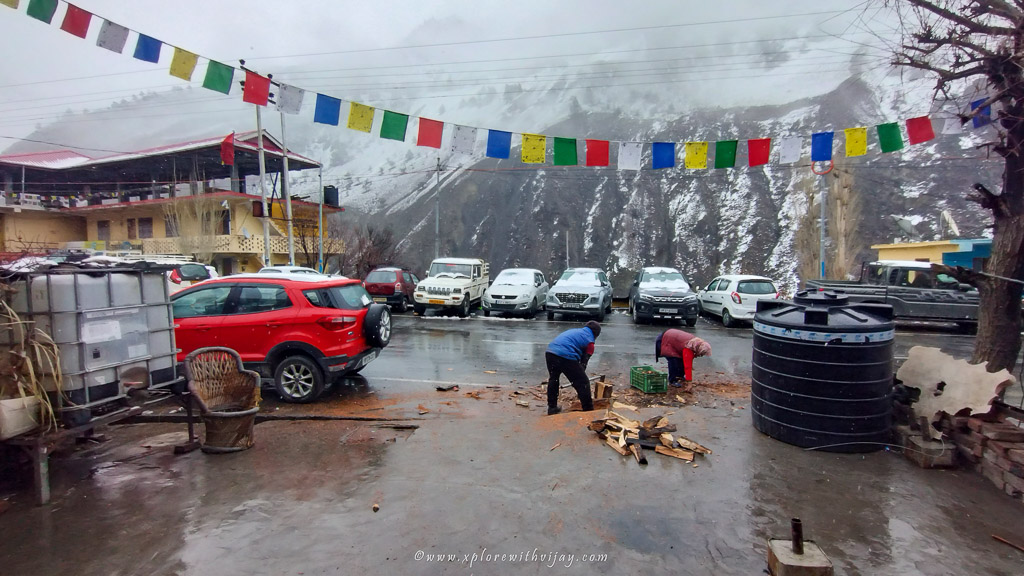
Day 3 – Greater the obstacle, the more glory in overcoming it:
The next morning, we continued our journey towards Kinnaur valley navigating via Rampur Bushahr, Tapri, Reckong Peo & Pooh. We were, now, traversing the Trans-Himalayan region of Lahaul & Spiti. There was a drastic change in topography. The green landscape gave way for rocky & barren mountains. Each passing minute, the weather was getting worse too.
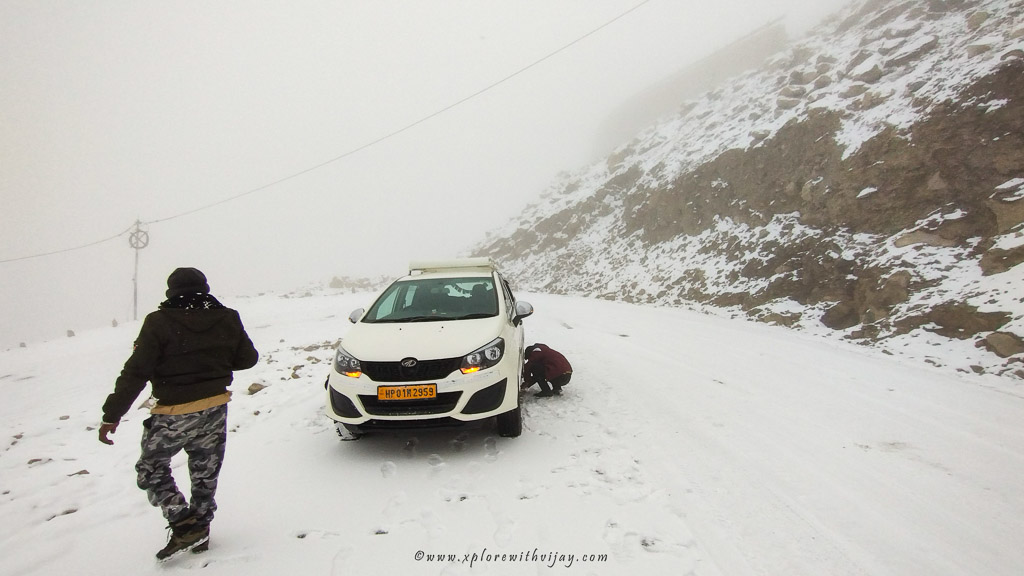
The sub-zero temperatures and hard snow on the road meant there was negligible traction. This was a huge risk factor that cannot be ignored. Our guide & driver were well-versed with such harsh conditions. We had a brief halt to put on the snow chains to prevent the vehicle from skidding. This entire process of fixing the chain is a laborious process & consumed crucial 45 minutes of our journey. With snow chains came high traction. That means, decreased speeds.
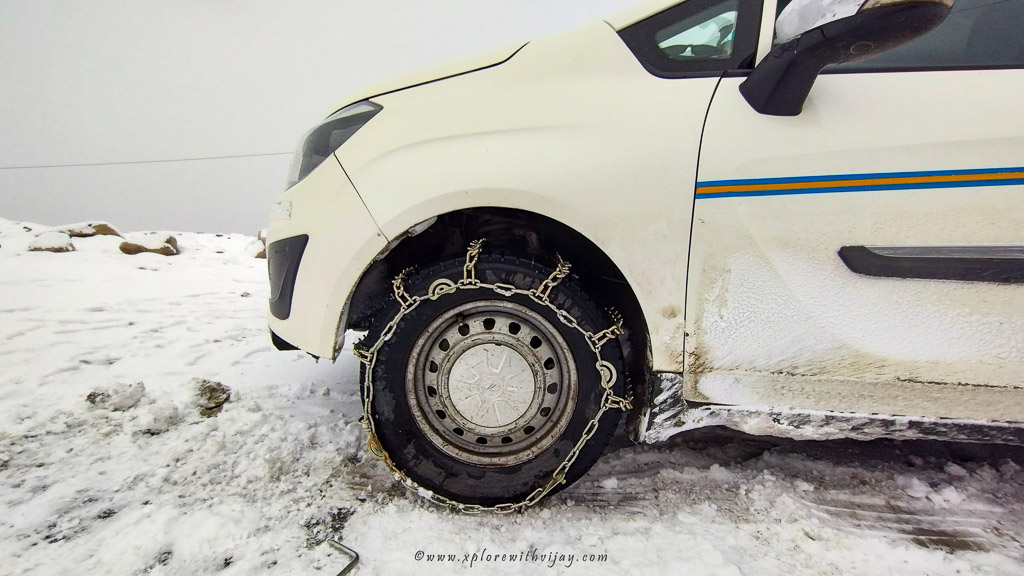
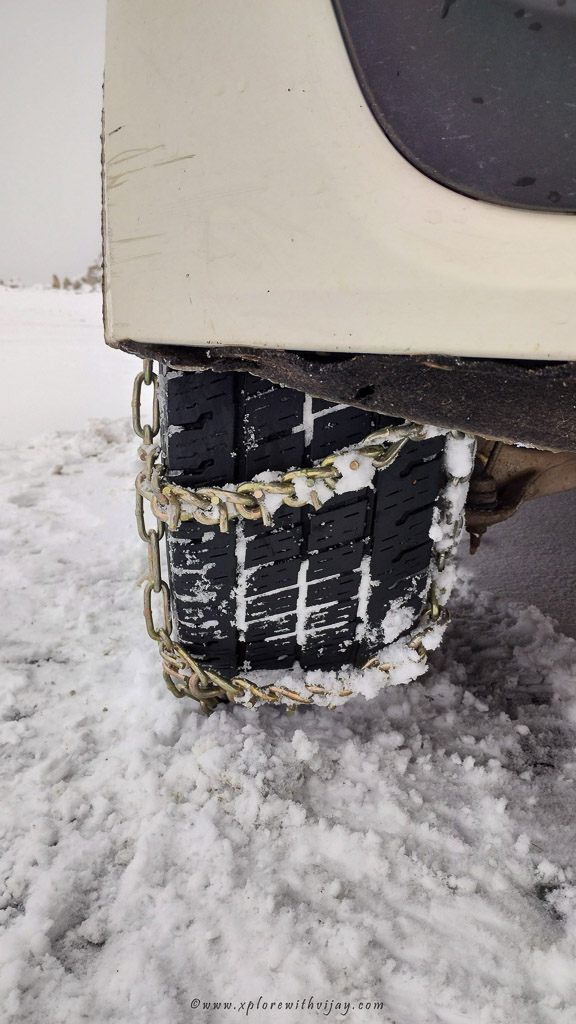
By the time we resumed, it was already dark, and the incessant snowfall compounded our problems. We were running behind schedule with the risk of getting stranded on the highway. After a prolonged journey, we arrived at our second overnight stay. Gue is a remote village in the Lahaul & Spiti district of Himachal Pradesh. We were, now, at an altitude of 10,000 feet. A 12-hour journey along the Himalayan highways was both intriguing and brought about fatigue. And, in no time, I fell asleep.
Day 4- Stranded Joyfully:
The next morning, I woke up to spectacular visuals of snow laden roof tops of neighboring houses and surrounded by majestic Himalayan Mountain ranges. The overnight snowfall further dented our scheduled plans. The lanes leading to the highways were completed blocked by fresh snow and we were stranded. In the interest of safety, we were advised not to resume our journey. The loss of one precious day was always running in the back of my mind. But then, on Mountains one has to adhere to the nature. To better utilize the available time, we chose to walk around this beautiful village. Our first visit was the Gue monastery, where a 550-year-old mummified monk is being guarded.
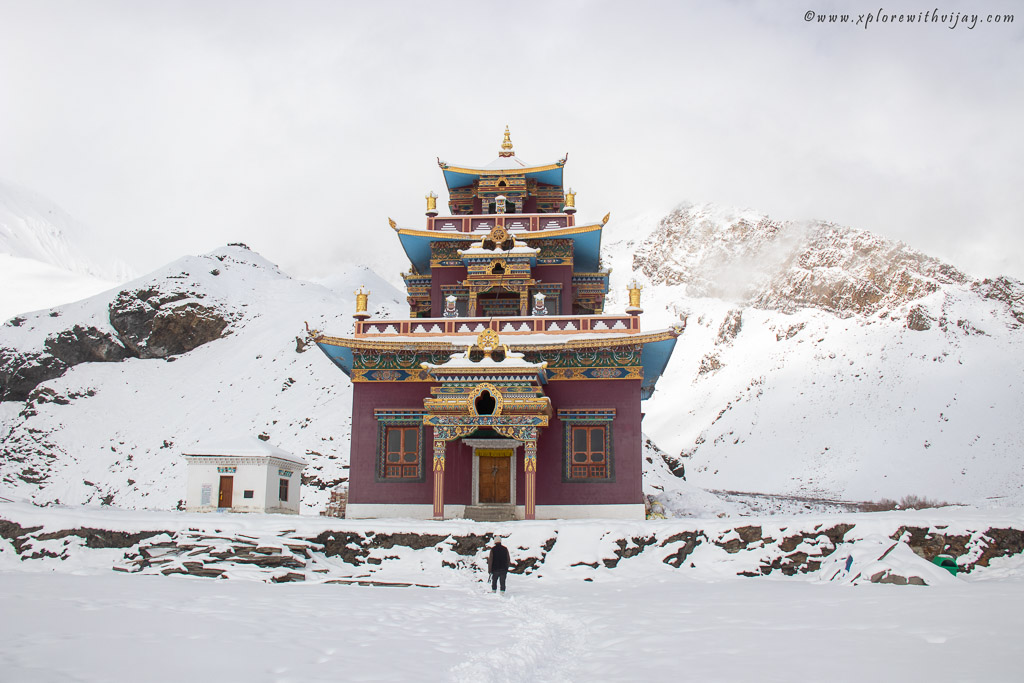
Another interesting fact is the proximity of Gue village to the India-China (precisely, Tibetan) border. Due to security concerns, no mobile phone reception is available at Gue. Rather, the Govt. of India had installed Satellite phones. The rest of day was spent indoors relishing the warmth and delicious food.
Day 5- Winter Wonderland:
The crystal clear skies welcome us all. The weather had cleared up. It was a fantastic visual with blue skies and sparkling white snow glowing with Sun’s reflection. After another sumptuous breakfast, we bid adieu to the wonderful people at the homestay and hopped on to our car for an exhilarating day to our destination. The road to Kaza and beyond was nothing short of a winter wonderland. When referring to Kaza, how can I not say about the Ki Monastery? It’s a 1000-year-old Tibetan monastery situated on a picturesque hilltop serving as a functional religious place for lamas.
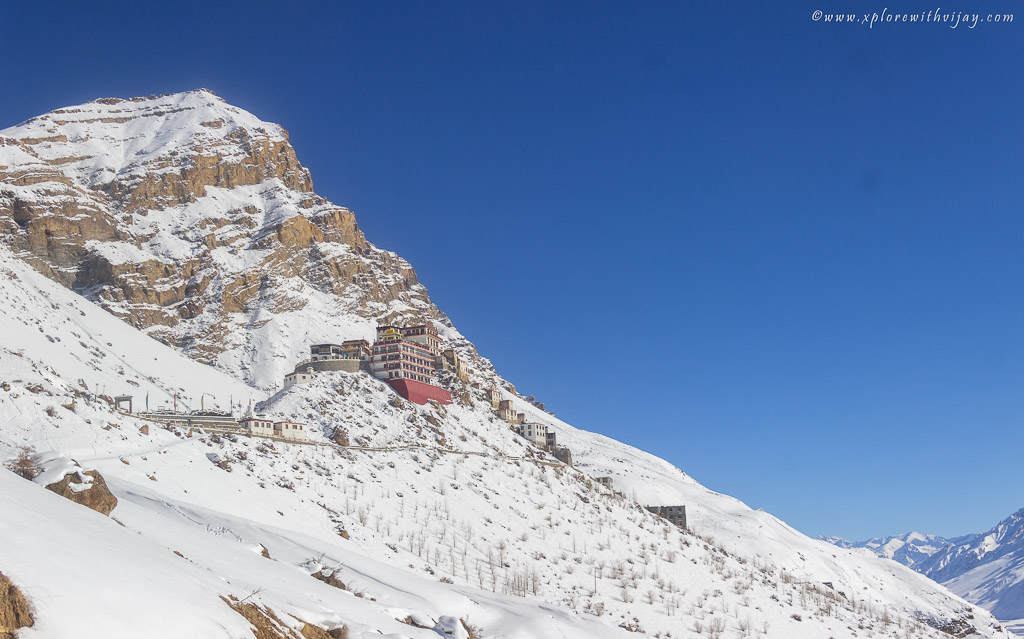
The unending long winding roads with snow on both sides, presence of tiny hamlets in the distance and towering peaks of snow-capped mountains was an unforgettable experience. Further ahead, we arrived at Asia’s highest bridge at 13,596 feet connecting the two villages Chicham and Kibber. Below this bridge is a 1000 feet deep gorge. And, soon after, we arrived at our destination – Chicham.
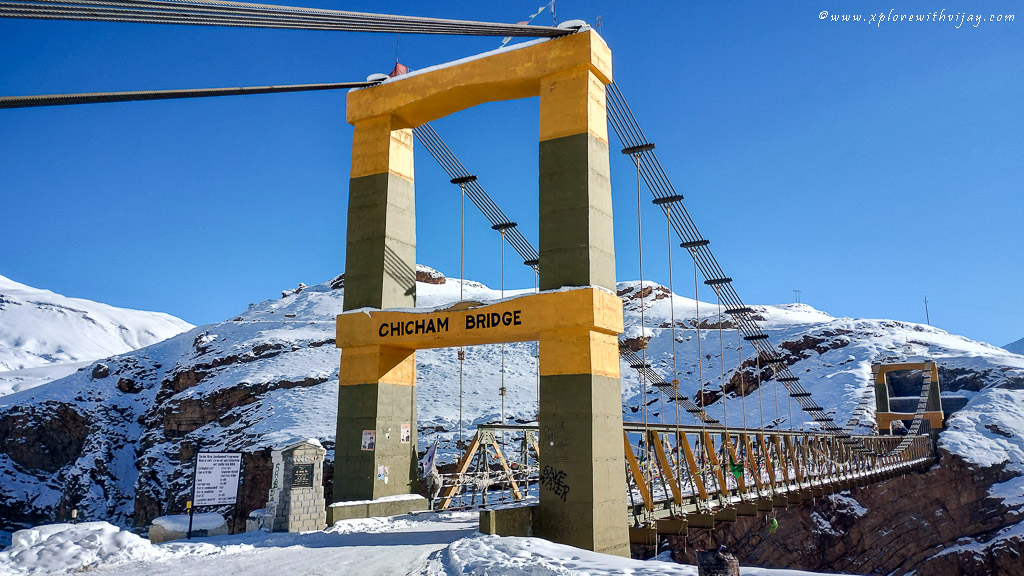
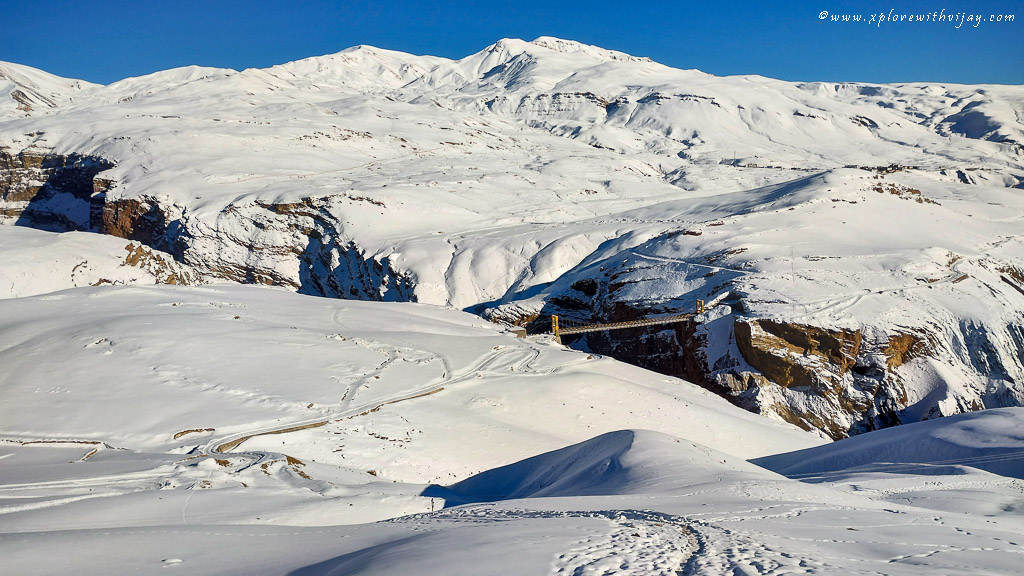
As night fell, the temperatures dropped to negative, going as low as minus 26 degrees Celsius. The official weather channels reported negative 38 degrees Celsius.
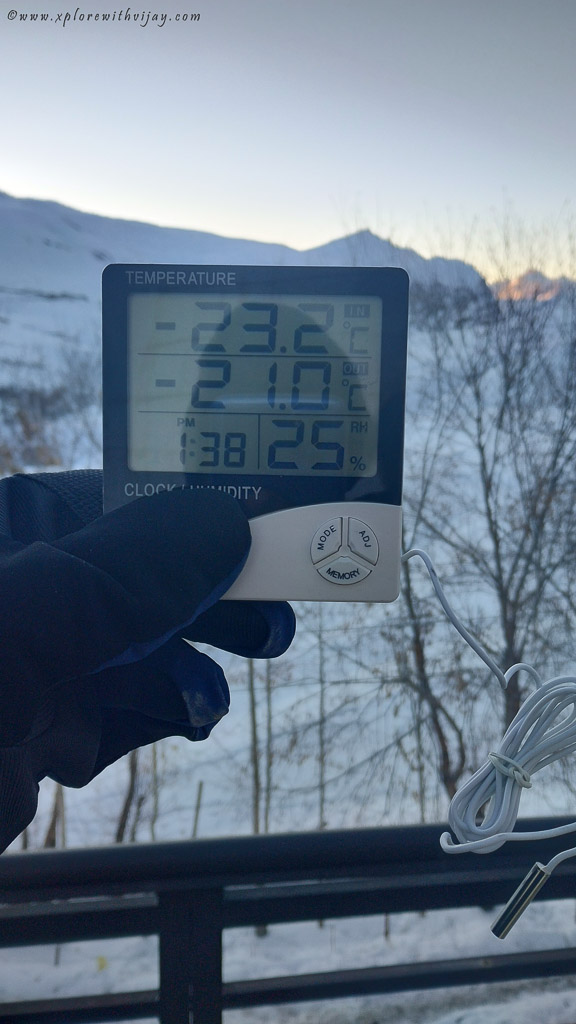
Day 6 – Frenzy & Excitement:
We woke up to a frosty morning and were getting ready for the day ahead of us. I was feeling the exhilaration, and my heart was full of anticipation. This was my first attempt at seeing one of the world’s most elusive big cats – The Snow Leopard! The entire valley was engulfed by fresh snow (the first snowfall for the season). This meant that there was a high probability of spotting the wild. It was not the easiest of conditions to just pick the camera gears and walk out. With sub-zero temperatures, lack of appetite, and the warm ambience inside the room, it’s a hard decision to venture out! Just when we sat down for having the first meal for the day, we were told that a Leopard has been spotted and we need to be at the spot as early as possible. For us wildlife photographers, meals are always secondary. So, we got up in no time and made our way to the spot. And, oh man! What an incredibly beautiful sight that was!
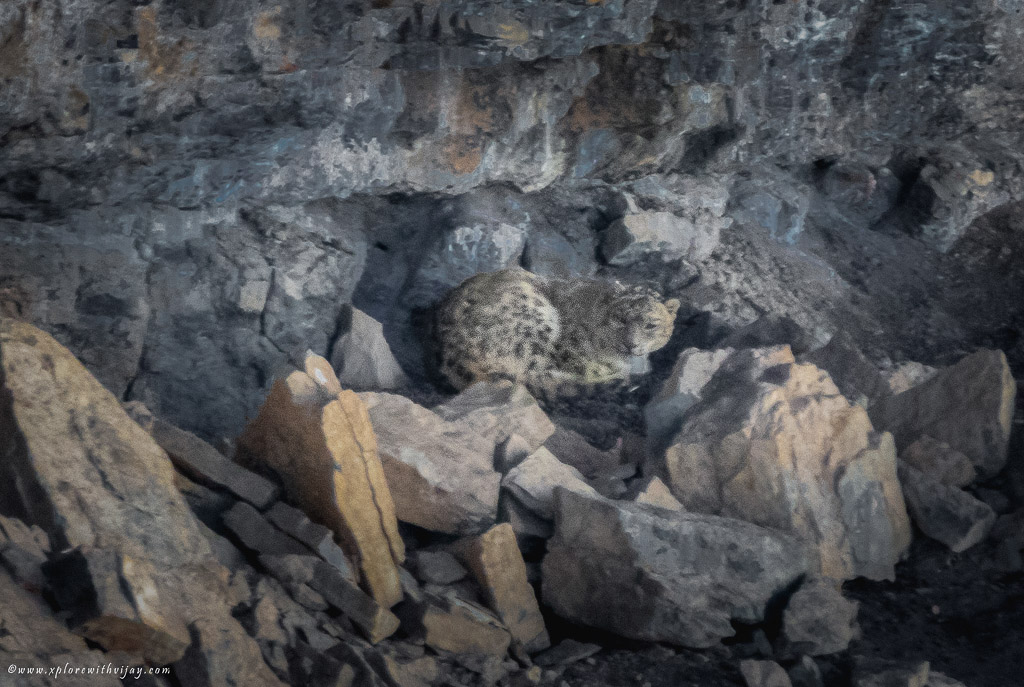
Massive Mountains, clear blue skies, and a hint of where the leopard was sighted kept the excitement level at its peak. To be honest, the Leopard was barely visible to naked eyes. With the right gears we managed to get hold of its location. And the rest is how proficient one is with the camera gears! The leopard was taking a nap around canopy of rocks, away from snow and completely disguised. We stood there, keeping our focus on the leopard, for all day long in the hopes of making better photographic perspectives.
Day 7 – Melancholy & Elation:
Waking up to visuals like this is an extraordinary experience! The unforgiving temperatures between dusk and dawn fluctuate between minus 35 Degrees and 15 degrees Celsius. Truly, this was a phenomenal encounter! The vastness of open fields dumped with snowfall, clear blue skies and the distant snow-clad mountains was a sight to behold. And the silence all over was a tremendous rendezvous!
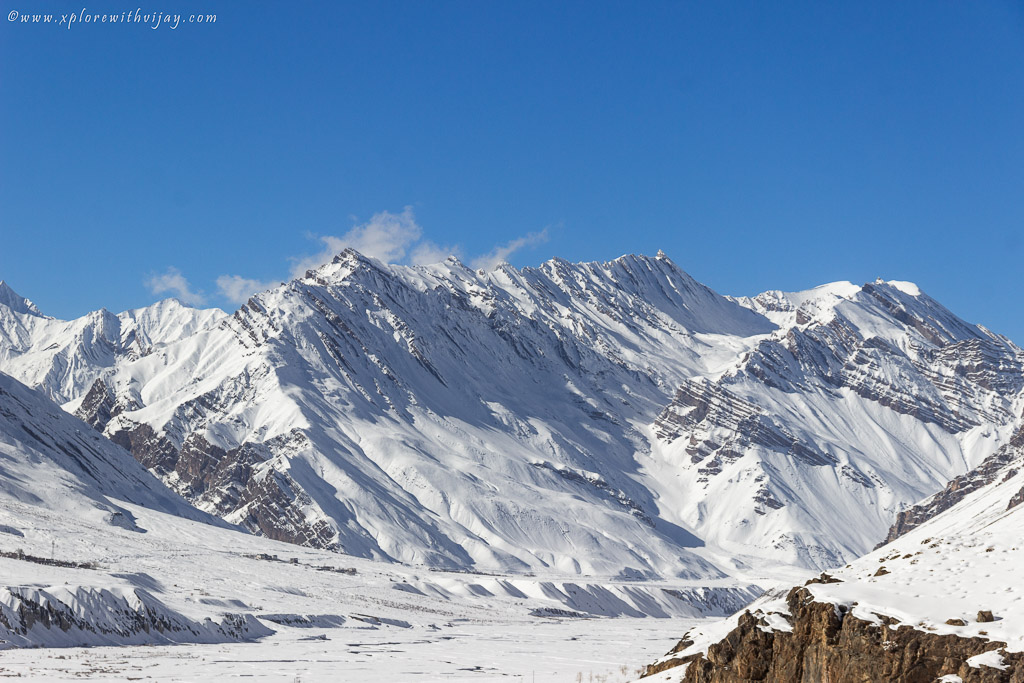
It was another bright wintry morning. Along the arid plains of the Himalayas, we found these beautiful species foraging for food. Well, I should say a family of two! A Male and a Female going about their everyday routine! Typically, these species live on open grassy slopes in high mountains and are usually found near cliffs but they try to avoid forested areas.
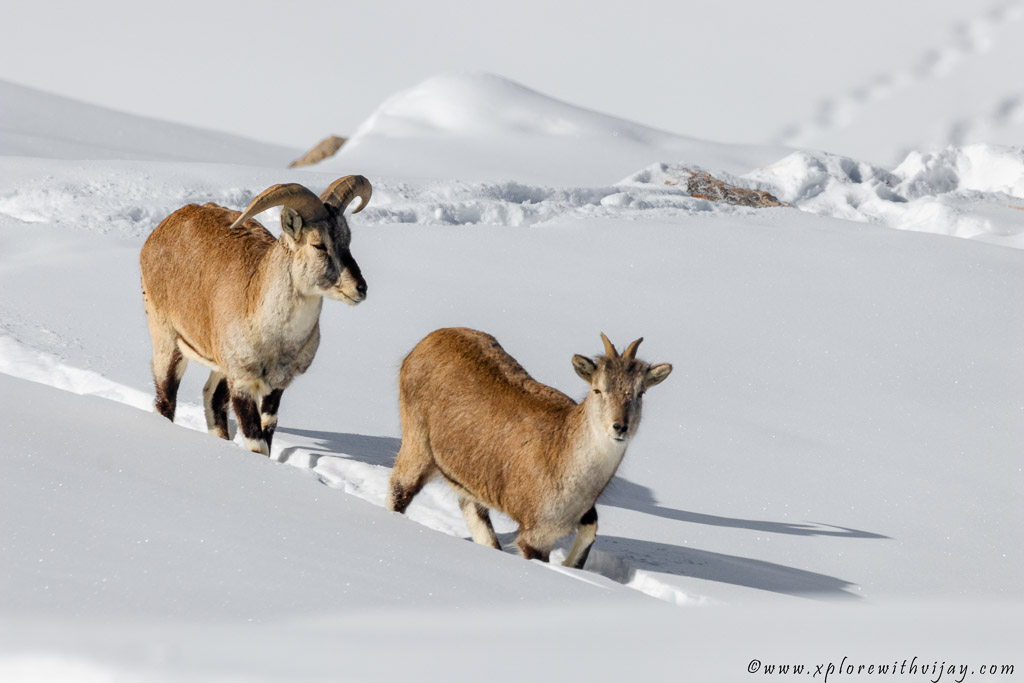
A Himalayan Blue Sheep is tolerant of extreme weather conditions and can be found from desert mountains in searing heat to windy and cold slopes. Natively, these are referred to as Bharal. While the name implies this is a sheep, these species are more related to Goats. The blue tint of the bharals makes them almost invisible against the background of blue-grayish rock that is typical within their habitat. These species are brilliant climbers with the ability to rest on the grassy mountain slopes. Also, due to the brilliant camouflage and the absence of a protective cover in their habitat, bharal remain motionless when approached. These species are among the primary prey for Snow Leopards.
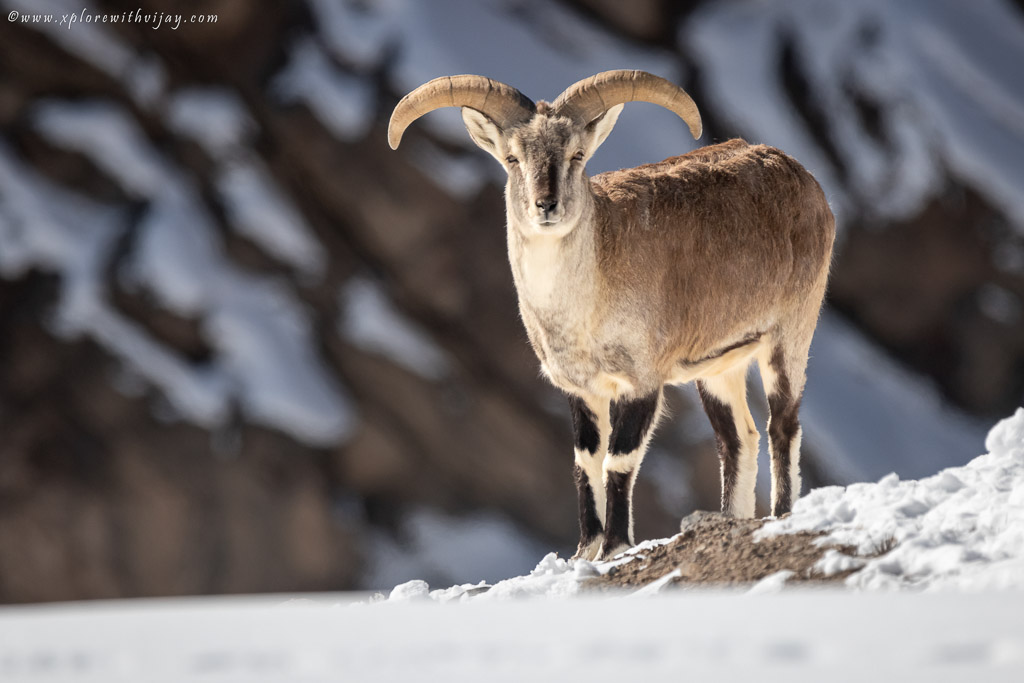
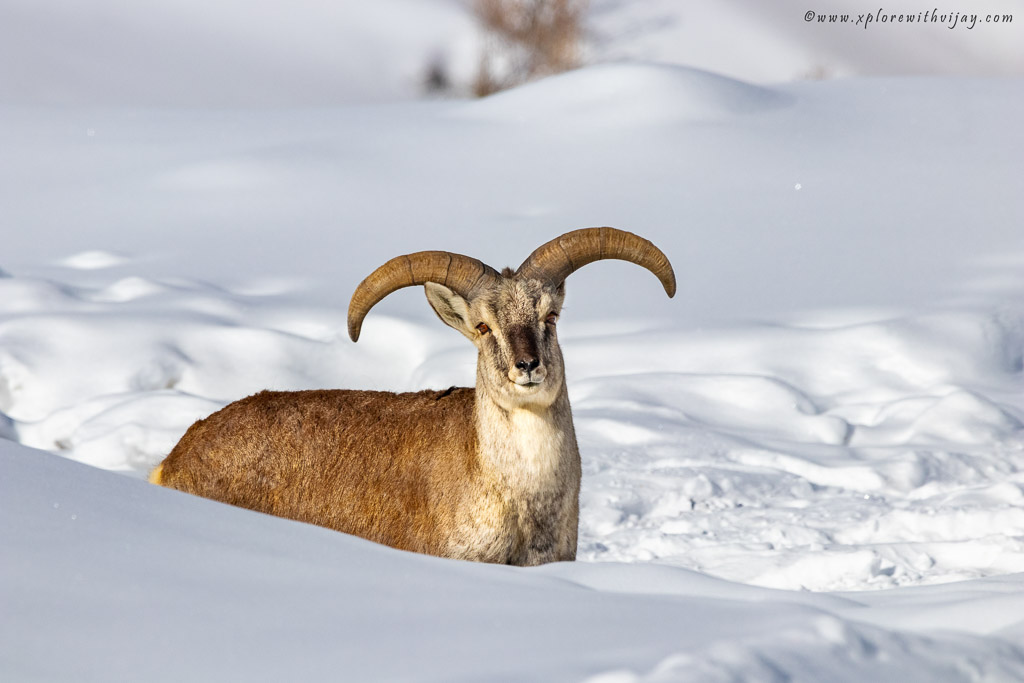
The day was turning out be a remarkable occasion. Just as I could contain the excitement of seeing the Bharals, there came another opportunity to photograph – The Himalayan Ibex, a subspecies of the Siberian Ibex. These species are found in the western Himalaya in India and Pakistan, usually at elevations of 12,000 feet and higher. In winter, they come down to lower elevations in search of food as the mountains get covered in snow. In fact, the heavy snow on the mountains brings both blue sheep (Bharal) and ibex down to lower elevations near the village. In summer they move back upward as the snow melts.
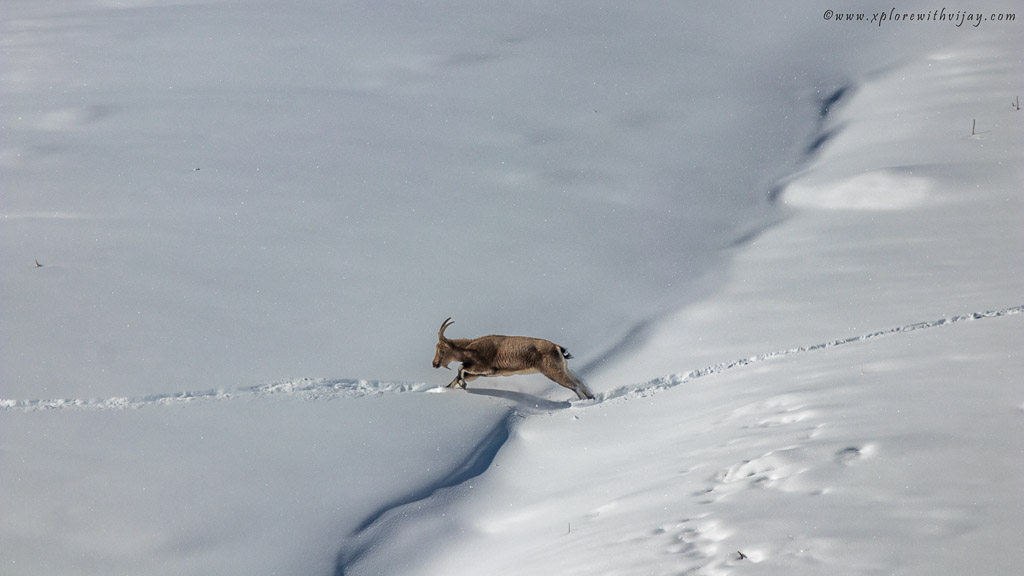
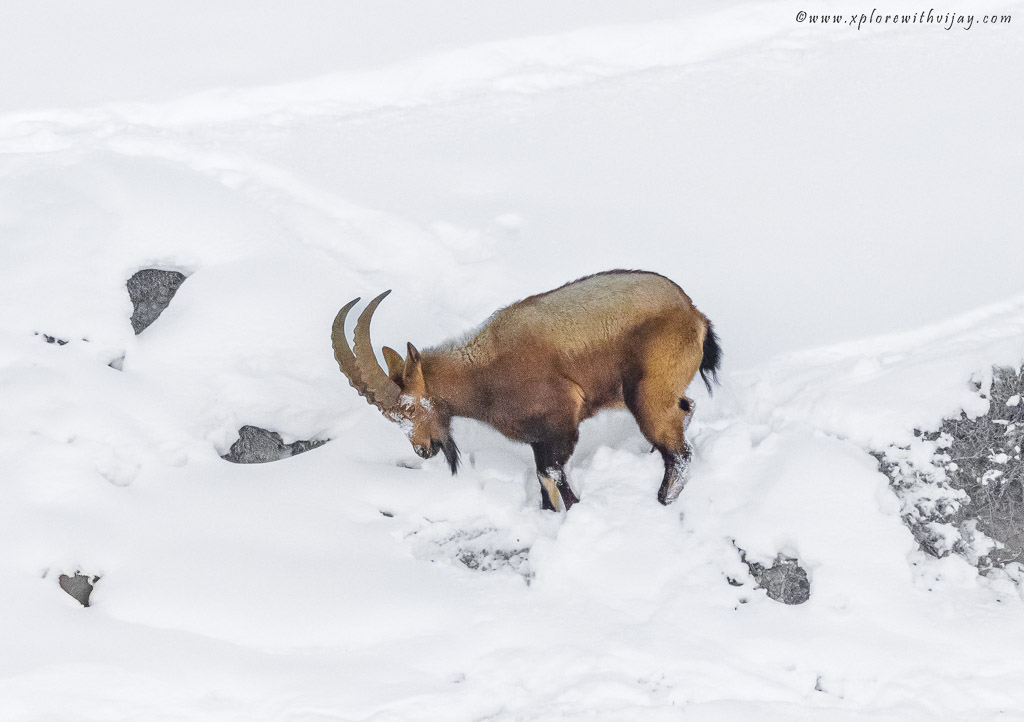
Just as we were wrapping up for the day, there came another opportunity – Himalayan Red Fox. This is one of the most widely distributed carnivores in the world. But the Himalayan sub-species are one of its kind. Found at an elevation of about 15,000 feet, these species are solitary creatures that pair during breeding season. They have beautiful, bushy tails, with a signature white patch at the tip. The tail helps with balance, and keeps them warm during long, cold nights. Among my favorite photographs!
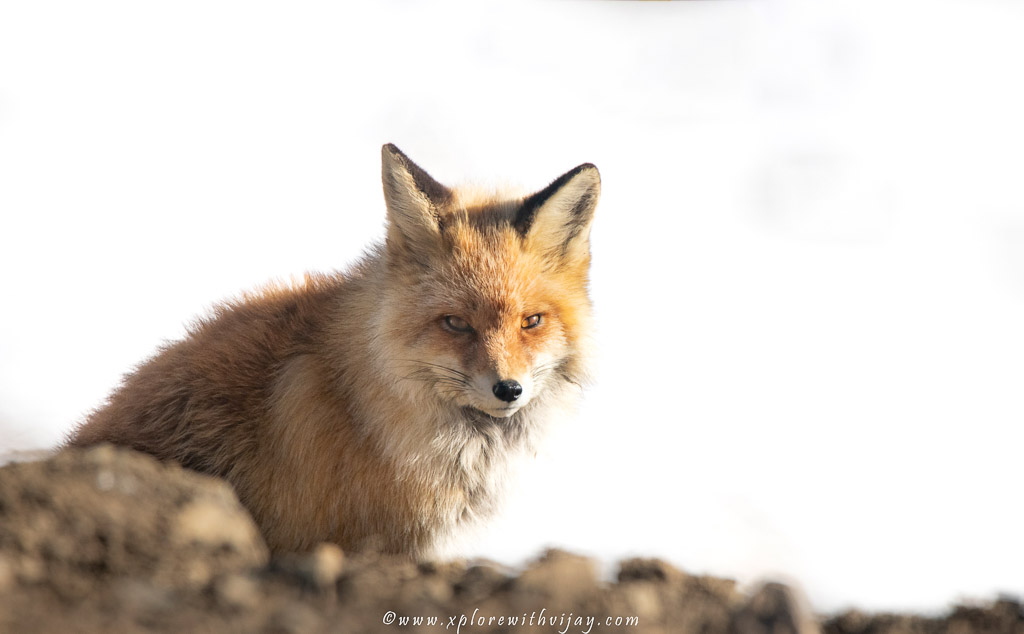
Day 8 – Reward for Patience:
This was our last day of expedition. And we were hoping to experience one more time the joy of spotting the Ghost of the Mountains – Snow Leopard. We did receive information from field guides about the whereabouts of leopard but were uncertain about its exact location. As always, I wouldn’t like to spend a lot of time for just one mammal. While in a forest, I aspire to capture as many wildlife as possible. We went around the villages on the lookout for some of the other magnificent creatures in this geography. With no information on Leopards, the focus shifted to birds. Soaring high above the vast arid lands of Spiti, watching this large raptor was a fantastic sight. It was huge and it appeared heavy. This is an Old-World vulture native to the Himalayas and the adjoining Tibetan Plateau. It is one of the two largest Old-World vultures and true raptors. The term Old World refers to Africa, Asia, & Europe. The Himalayan vulture lives mainly in the higher regions of the Himalayas and the Tibetan Plateau at the elevation range of 3,900 ft to 18,000 ft.

The next one is my favorite and was on my list for a long time! Here’s a photograph of a bird (in fact, a raptor) that has got lustrous gold feathers and a powerful beak showcasing its hunting prowess. With its great agility, sharp and massive claws, the Himalayan Golden Eagle is one of the best-known raptors. In fact, the largest of all Himalayan Birds. Look at its sheer mass and size! This photograph was shot while we were on the move. I had my camera handy and was on the lookout for such subjects. We spotted the bird several meters ahead of us and it was just a matter of minutes after I took this shot that it flew away with its massive wings. Wow! That was quite a sight.

Deep within, I had strong hopes of spotting a leopard again. And yes. We did spot. After, a prolonged wait for almost an entire length of the day, this leopard was barely visible to the naked eyes. Fortunately, we had qualified guides with impeccable sights set on the elusive cat. With sub-zero temperatures, it’s never easy to photograph in high altitude regions of the Himalayas. But grit and determination help overcome such adverse circumstances. This photograph of Snow Leopard feasting on its prey will be among the many treasured photographs in my collection.

Day 9 & 10 – Bidding Adieu:
Although we lost one precious day due to bad weather, we had a thoroughly satisfying and a wonderful trip to cherish for a lifetime. Throughout the journey, we had the companionship of two knowledgeable & trustworthy guide & driver, who navigated skillfully across some of the dangerous stretches. Kudos to all the field guides and caretakers at the homestay, for without them this trip wouldn’t have been delightful. Day 9 & 10 was completely spent on getting back to Chandigarh and then connecting flights back to New Delhi and eventually back home to Chennai.
Let me know if you liked this travelogue in the comments section below. Feel free to share with family & friends. And do sign up for my future travelogues by registering with your email ID.

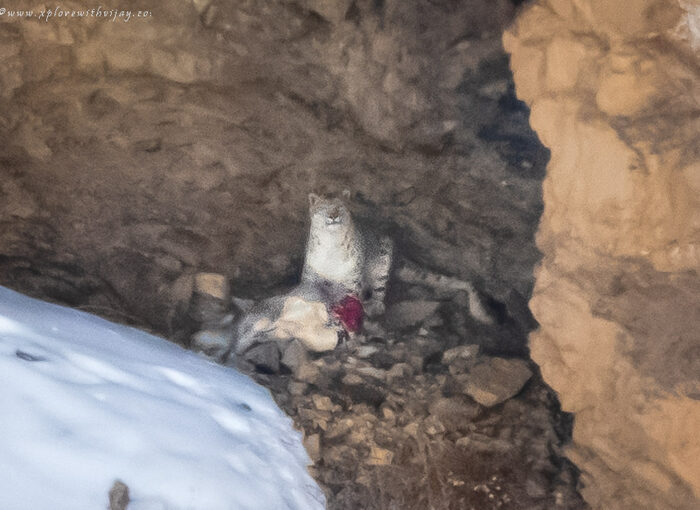
Good one. Enjoyed reading as usual.
Thank you for the feedback, Satish! I am glad you liked it!
Amazing thanks for the experience through words and pictures anna
Thank you, Anjana!
Beautiful travelog.. such rare and wonderful pics… thanks for sharing this!!
Thank you so much for taking the time to read & appreciate! I’m delighted!
Looked as though, having travelled with you. Really commendable at your determination to get things done. Personal safety, multi-fold, needs to be ensured.
Thank you so much! Super happy to have received such a feedback!